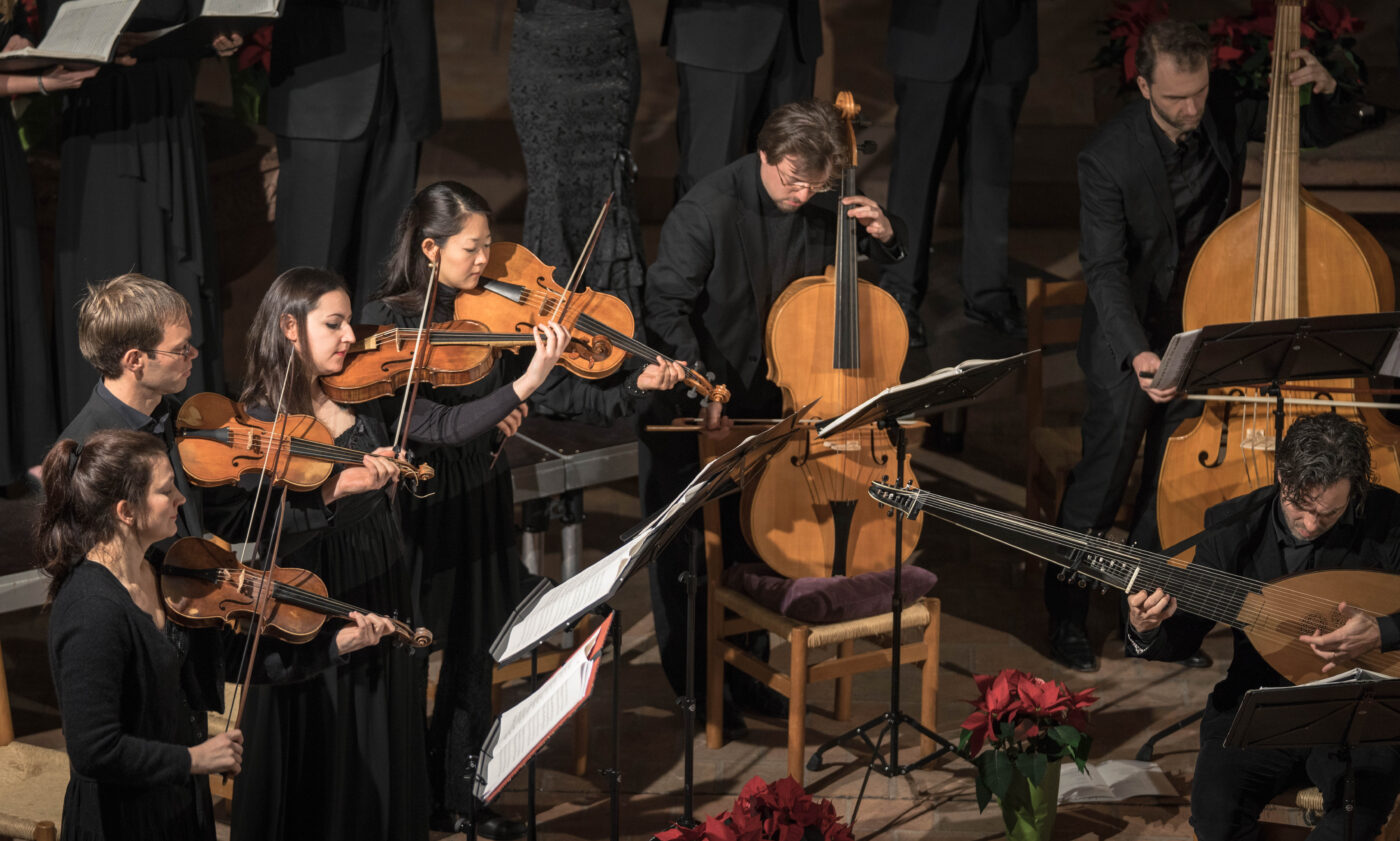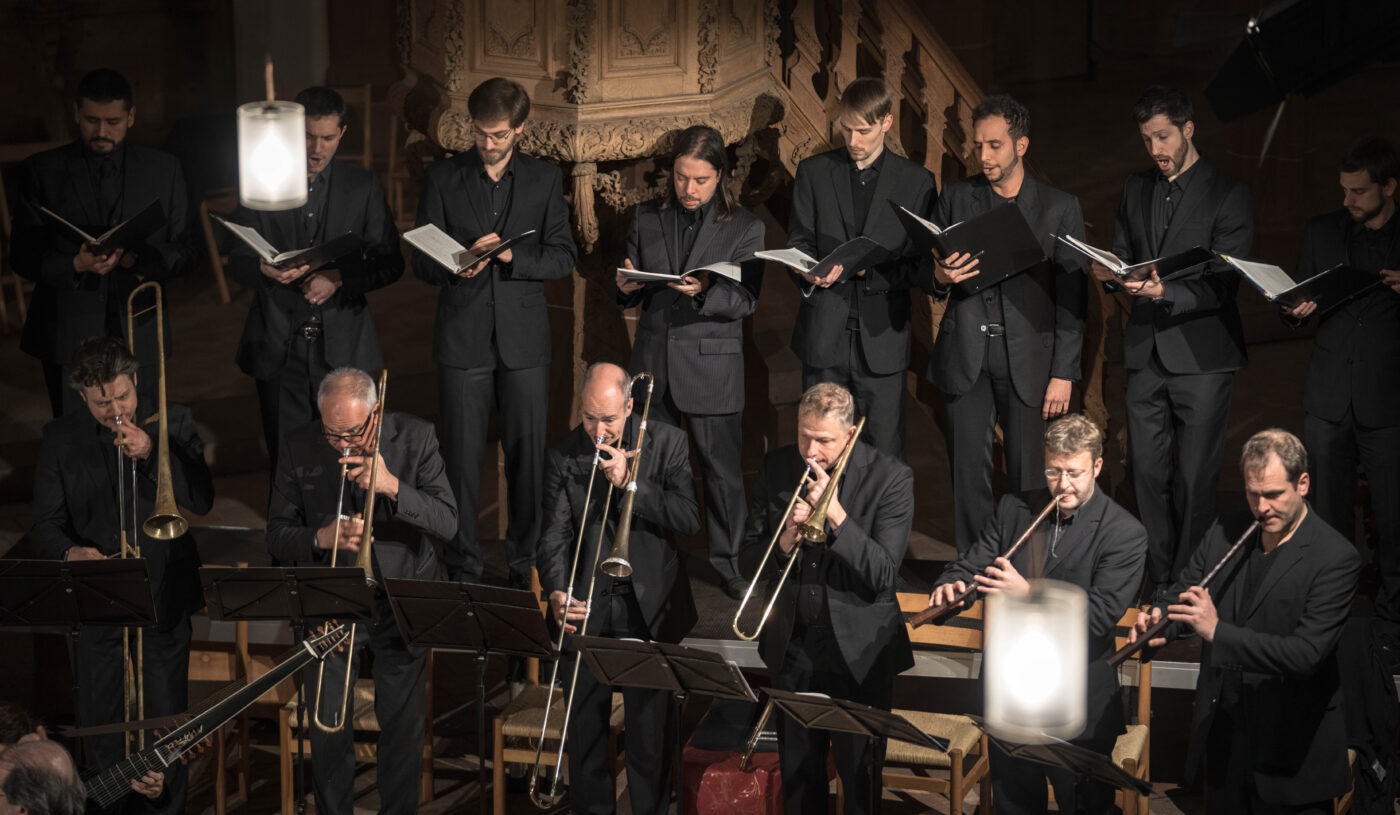
In 1620, the young Dutch poet, diplomat and composer Constantijn Huygens was in Venice and reported in his diary that he was deeply impressed by his visit to a festive Vespers service: “On 24 June, the feast of St. John the Baptist, I was taken to Vespers in the church of SS. Giovanni e Lucia, where I experienced music the like of which I will never hear again in my life. Its composer, the very famous Claudio di Monteverde, maestro di capella of St. Mark’s, performed it on this occasion and conducted it himself, accompanied by four theorbos, two tines, two bassoons, two violins, a bass viola of immense dimensions, organ and other instruments – all equally well mastered and played – not to mention 10 or 12 singing voices. I was rapt with pleasure.” Apart from the fact that Huygens was obviously wrong about the church space – a church SS. Giovanni e Lucia does not exist in Venice – his report is a valuable testimony to the splendour with which the Vespers services were celebrated in his time in Italy, especially in Venice. Here, Vespers experienced their heyday especially in the first decades of the 17th century.
As evening prayer on the eve of the Sunday or feast day, Vespers is an integral part of the so-called prayers of the hours. It opens the liturgical celebrations of the following day and follows a strict liturgical sequence: after the always unchanging opening (Deus in adiutorium and Domine ad adiuvandum me festina), four or five psalms framed by antiphons, a reading, a responsory, a hymn and, as the climax, the Magnificat, the hymn of praise to Mary, are heard. The evening prayer ends with the fixed formula Benedicamus Domino / Deo gratias. However, this seemingly rigid course of events had anything but a restrictive effect on the generation of composers on the threshold between the Renaissance and the Baroque. The variety of texts to be set to music inspired them just as much to ever new compositions as the attraction of composing a new setting of the Magnificat that illuminated the text in a special way. The fact that, in contrast to settings of the Ordinary of the Mass, which were limited in duration, Vespers were hardly subject to any regulations also meant that composers focused on settings of the Psalms and the Magnificat. Thus, in northern Italy and especially in Venice, countless vespers collections and prints were produced in the first two decades of the 17th century, documenting the heyday. These collections are seldom understood as a reproduction of a specific vespers for a fixed day, since they usually contain several settings of a text in different instrumentations. Rather, they are to be understood as repertoire and selection collections, the contents of which could be drawn upon in the arrangement of Evening Prayer..

This evening, we will hear a Vespers compiled from various collections, as it might have been heard in St. Mark’s Basilica in Venice on Christmas Day during Claudio Monteverdi’s long period of activity as maestro di capella (he held this office from 1613 until his death in 1643). The Responsorium for the opening Domine ad adiuvandum me festina comes from Monteverdi’s famous Marian Vespers, which he published in print in 1610, even before he took up his post at St Mark’s Cathedral. In composing this work, Monteverdi drew on the toccata of his opera L’Orfeo, written a few years earlier. Majestic fanfares and homophonic choral calls open the evening.The Magnificat and the five psalms (Dixit Dominus, Confitebor tibi Domine, Beatus vir, Laudate pueri and Laudate Dominum) are all taken from Monteverdi’s collection Selva morale e spirituale, printed in 1641. In this collection of sacred works, the most important apart from the Vespers of St. Mary, Monteverdi brought together a selection of Italian and Latin compositions that he had composed during his tenure at St. Mark’s Cathedral. The variety of texts and the different instrumentations with solos, choir (up to eight voices) and instruments document Monteverdi’s versatility just as much as the use of the most diverse compositional styles. The eight-part Magnificat is the climax of the vespers. It unites choir, solos and instrumental voices in a similarly splendid manner as the Invitatorium. Bar changes between even and odd scales run through the work, homophonic choral sections (also alternating in double choir) are interrupted by imitative and short soloistic passages. Typical of Monteverdi’s compositional style, the interpretation of the text is always at the centre – whether in the two-part dispersit superbos interspersed with coloratura as a symbol of “dispersal” or in the majestic call Fecit potentiam in brachio suo (“he exercises violence with his arm”).

The psalms were introduced by Gregorian antiphons and organ intonations by Giovanni Gabrieli, who worked as organist at St Mark’s Cathedral until 1612. Instead of the antiphons usually repeated after the psalm, motets and instrumental works by Monteverdi, Gabrieli and their contemporaries Alessandro Grandi and Gabriele Usper (initially active as an organist and composer in Venice as a pupil of his better-known uncle Francesco Usper, later presumably in his native Istria) are heard. Replacing the antiphons with figural music seems to correspond to contemporary practice, as we can see from the contents of Monteverdi’s Marian Vespers, but also from collections by his contemporaries, which include psalms and Magnificat settings as well as motets and concerti.
Even if no actual Christmas vespers from Monteverdi’s pen have survived, it could have been performed in this form under his direction in Venice in the first half of the 17th century and gives us a vivid picture of Italian church music on the eve of the Baroque.
– Frauke Heinze
